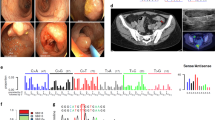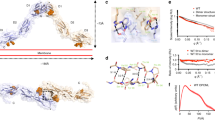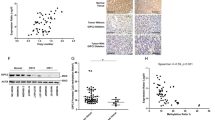Abstract
The RET gene encodes a receptor tyrosine kinase whose function is essential during the development of kidney and the intestinal nervous system. Germline mutations affecting one of five cysteines (Cys609, 611, 618, 620 and 634) located in the juxtamembrane domain of the RET receptor are responsible for the vast majority of two cancer-prone disorders, multiple endocrine neoplasia type 2A (MEN 2A) and familial medullary thyroid carcinoma (FMTC). These mutations lead to the replacement of a cysteine by an alternate amino acid. Mutations of the RET gene are also the underlying genetic cause of Hirschsprung disease (HSCR), a congenital aganglionosis of the hindgut. In a fraction of kindreds, MEN 2A cosegregate with HSCR and affected individuals carry a single mutation at codons 609, 618 or 620. To examine the consequences of cysteine substitution on RET function, we have introduced a Cys to Arg mutation into the wild-type RET at either codons 609, 618, 620, 630 or 634. We now report that each mutation induces a constitutive catalytic activity due to the aberrant disulfide homodimerization of RET. However, mutations 630 and 634 activate RET more strongly than mutations 609, 618 or 620 as demonstrated by quantitative assays in rodent fibroblasts and pheochromocytoma PC12 cells. Biochemical analysis revealed that mutations 618 and 620, and to a lesser extent mutation 609, result in a marked reduction of the level of RET at the cell surface and as a consequence decrease the amount of RET covalent dimer. These findings provide a molecular basis explaining the range of phenotype engendered by alterations of RET cysteines and suggest a novel mechanism whereby mutations of cysteines 609, 618 and 620 exert both activating and inactivating effects.
This is a preview of subscription content, access via your institution
Access options
Subscribe to this journal
Receive 50 print issues and online access
$259.00 per year
only $5.18 per issue
Buy this article
- Purchase on Springer Link
- Instant access to full article PDF
Prices may be subject to local taxes which are calculated during checkout
Similar content being viewed by others

Author information
Authors and Affiliations
Rights and permissions
About this article
Cite this article
Chappuis-Flament, S., Pasini, A., De Vita, G. et al. Dual effect on the RET receptor of MEN 2 mutations affecting specific extracytoplasmic cysteines. Oncogene 17, 2851–2861 (1998). https://doi.org/10.1038/sj.onc.1202202
Received:
Revised:
Accepted:
Published:
Issue Date:
DOI: https://doi.org/10.1038/sj.onc.1202202
Keywords
This article is cited by
-
Multiple endocrine neoplasia syndromes, children, Hirschsprung’s disease and RET
Pediatric Surgery International (2008)
-
RET(MEN 2B) is active in the endoplasmic reticulum before reaching the cell surface
Oncogene (2007)
-
Self-association of the transmembrane domain of RET underlies oncogenic activation by MEN2A mutations
Oncogene (2006)
-
Pheochromocytoma-associated syndromes: genes, proteins and functions of RET, VHL and SDHx
Familial Cancer (2005)
-
Disease associated mutations at valine 804 in the RET receptor tyrosine kinase confer resistance to selective kinase inhibitors
Oncogene (2004)


